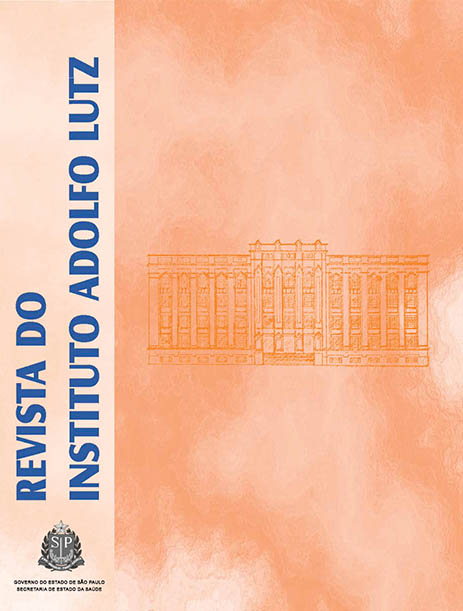Abstract
A remarkable characteristic of the crude palm oil production in Bahia is the rustic way of extraction and the variety of products sold in supermarkets and marketplaces. This study investigated the criteria used by baianas de acarajé for choosing the palm oil for deep-frying of acarajé, and to evaluate their quality. Fifteen kinds of crude palm oil, usually employed for frying acarajé in Salvador City, were collected in their original packing. The quality of these samples was verified by analysis of acidity (mg KOH/g), peroxide value (mEq/ kg), refraction index (40 ºC) and color (CIELab). During the interviews, the baianas de acarajé have stated preference to labeled palm oil (48%) and the products containing both olein and stearin (89%) for frying acarajé. The acidity was higher than those established by legislation (10mg KOH/g) in 73.33% of samples; the peroxide values varied from 0.5 to 4.5 mEq/kg, and the refraction index between 1.4500-1.4590. The samples containing only olein fraction, were more brighter and intense red than those composed by both fractions. High heterogeneity was observed in the analyzed palm oil samples, remarkably high acidity, and when this condition is combined with high temperature frying, a formation of the absorbable and highly cytotoxic oxidized fatty acids might be induced.
References
1. Brasil. Ministério do Desenvolvimento, Indústria e Comércio Exterior. Superintendência da Zona Franca de Manaus (SUFRAMA). Potencialidades regionais: estudo de viabilidade econômica do dendê. 2003. [acesso 2008 Out 23]. Disponível em: [http://www.suframa.govol.br/publicacoes/proj_pot_regionais/dende.pdf ].
2. Lody R organizador. Dendê símbolo e sabor. São Paulo: Editora SENAC; 2009.
3. Malacrida CR, Jorge N. Influência da relação superfície/volume e do tempo de fritura sobre as alterações da mistura azeite de dendê-óleo de soja. Ciênc Agrotec. 2006;30(4):730-42.
4. Camilo VMA, Almeida DT, Araújo PN, Cardoso LA, Andrade JC, Bonelli M. Avaliação da qualidade de óleos e gorduras de fritura em bares, restaurantes e lanchonetes. Rev Inst Adolfo Lutz. 2010;69(1):91-8.
5. Berger KG. The use of palm oil in frying. Selangor: Malaysian Palm Oil Promotion Council (MPOPC); 2005 [acesso 2010 Jul 14]. Disponível em: [http://www.mpoc.org].
6. Edem, DO. Palm oil: Biochemical, physiological, nutritional, hematological, and toxicological aspects: a review. Plant Foods Hum Nutr. 2002;57:319-41.
7. Instituto Adolfo Lutz (São Paulo - Brasil). Métodos físico-químicos para análise de alimentos: normas analíticas do Instituto Adolfo Lutz. 4ª ed. Brasília (DF): ANVISA; 2005.
8. Andreu-Sevilla A, Hartmann EA, Ayas E, Burlo-Carbonell F, Estrella PD, Valverde JM, et al. Mathematical quantification of total carotenoids in Sioma_oil using color coordinates and multiple linear regression during deep-frying simulations. Eur Food Res Tech. 2008;22:1283-91.
9. Codex Alimentarius Comission - (Joint FAO/WHO). Codex standard for named vegetable oils, Codex Stan 210 (Amended 2003-2005). Roma; 2003.
10. Brasil. Agência Nacional de Vigilância Sanitária. Resolução RDC n° 270, 2005. Aprova o Regulamento Técnico para óleos vegetais, gorduras vegetais e creme vegetal. [acesso 2008 Set 21]. Disponível em: [http://www.anvisa.gov.br].
11. Nkpa NN, Osanu FC, Arowolo TJ. Effect of Packaging Materials on Storage Stability of Crude Palm Oil. J Am Oil Chem Soc. 1990;67(4):854-7.
12. Gee, PT. Analytical characteristics of crude and refined palm oil and fractions. Eur J Lipid Sci Techno. 2007;109:373–9.
13. Jorge N, Bellei BPS, Lunardi VM, Malacrida CMR. Alterações Físico-químicas dos óleos de girassol, milho e soja em frituras. Quim Nova. 2005;28(6):947-51.
14. Campinha CMS, Machado CRG, Araújo W. Causa do aumento da acidez do óleo bruto durante o armazenamento. In: Anais do I Congresso da Rede Brasileira de Tecnologia do Biodiesel; 2007; Brasília, BR.
15. Tango JS, Santos LC, Lacaz PA, Turatti JM, Silva MTC, (é necessário colocar o nome dos 6 primeiros autores) et al. Características físicas e químicas do óleo de dendê. Bol Inst Tec Aliment (ITAL). 1981;4(18):509-42.

This work is licensed under a Creative Commons Attribution 4.0 International License.
Copyright (c) 2011 Instituto Adolfo Lutz Journal
